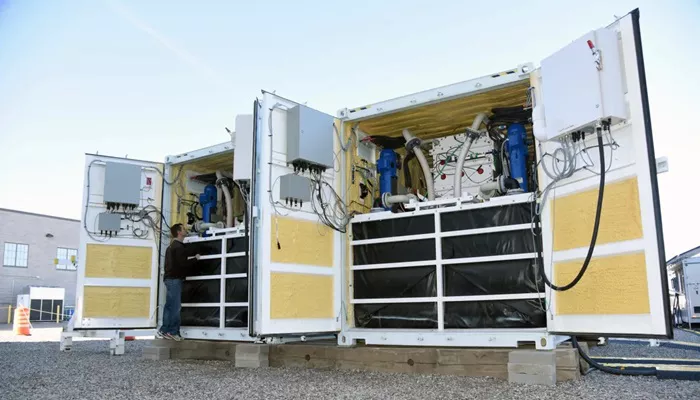A refrigerator is one of the most essential appliances in any home, preserving food and preventing spoilage during power outages. When the electricity goes out, a backup generator can keep your refrigerator running, but choosing the right size generator is critical. If the generator is too small, it won’t handle the load; if it’s too large, you’ll waste fuel and money. This article explores how to determine the appropriate generator size to run a refrigerator, factors to consider, and practical tips for making the right choice.
Why Generator Size Matters
Generators are rated by their power output, typically measured in watts (W) or kilowatts (kW). The size of the generator you need depends on the power requirements of the appliances you want to run. Refrigerators, like many other appliances, have two power ratings: running watts and starting watts. Running watts refer to the power needed to keep the appliance operating, while starting watts (or surge watts) are the extra power required to start the motor. Failing to account for both can lead to an overloaded generator or a refrigerator that won’t start.
Steps to Determine the Right Generator Size
Check the Refrigerator’s Power Requirements
The first step is to find the refrigerator’s running and starting wattage. This information is usually found on a label inside the refrigerator or in the owner’s manual. If the wattage isn’t listed, you can calculate it using the voltage (V) and amperage (A) ratings:
Wattage=Voltage×Amperage
For example, if your refrigerator operates at 120 volts and draws 5 amps, its running wattage is:
120V×5A=600W
Starting wattage is typically 2–3 times the running wattage, so a refrigerator with 600 running watts may require 1,200–1,800 starting watts.
Account for Additional Appliances
If you plan to power other appliances simultaneously (e.g., lights, a freezer, or a microwave), add their wattage requirements to the total. This ensures the generator can handle the combined load.
Choose a Generator with Adequate Capacity
Select a generator with a rated wattage that exceeds the total running watts of your refrigerator and other appliances. Additionally, ensure the generator’s surge wattage rating can handle the highest starting wattage of any appliance.
Example Calculation
Let’s say your refrigerator has the following power requirements:
Running watts: 600W
Starting watts: 1,800W
If you also want to power a few lights (100W) and a small TV (200W), the total running wattage is:
600W+100W+200W=900W
The starting wattage is dominated by the refrigerator’s surge requirement of 1,800W. Therefore, you’ll need a generator with:
A running wattage rating of at least 900W
A surge wattage rating of at least 1,800W
In this case, a 2,000-watt generator would be a suitable choice, as it provides enough power to handle the starting surge and the combined load.
Factors to Consider When Sizing a Generator
Refrigerator Type and Size
The power requirements of a refrigerator vary depending on its size and type. A compact mini-fridge may only need 100–200 running watts, while a large side-by-side refrigerator-freezer could require 700–1,200 running watts. Always check the specific wattage of your appliance.
Energy Efficiency
Modern energy-efficient refrigerators often consume less power than older models. If you have an ENERGY STAR-rated refrigerator, it may require fewer watts to operate, allowing you to choose a smaller generator.
Generator Type
Portable generators are ideal for short-term use and smaller loads, while standby generators are better suited for whole-house backup power. If you only need to run a refrigerator, a portable generator with a capacity of 2,000–3,000 watts is usually sufficient.
Fuel Type
Generators powered by gasoline, propane, or diesel have different efficiency levels and runtime capabilities. Propane generators, for example, are clean-burning and have a longer shelf life, making them a popular choice for emergency backup power.
Runtime and Fuel Efficiency
Consider how long you need the generator to run. Smaller generators may need refueling more frequently, while larger models can run for extended periods but consume more fuel.
Practical Tips for Running a Refrigerator on a Generator
Minimize Door Openings: To reduce the load on the generator, limit how often you open the refrigerator door during an outage.
Use a Surge Protector: Protect your refrigerator and generator from power surges by using a surge protector.
Regular Maintenance: Ensure your generator is well-maintained and tested regularly to guarantee reliable performance during an outage.
Conclusion
Choosing the right size generator to run a refrigerator involves understanding the appliance’s power requirements, accounting for starting surges, and considering additional loads. A generator with a capacity of 2,000–3,000 watts is typically sufficient for most refrigerators, but always verify the specific wattage of your appliance and any other devices you plan to power. By selecting the appropriate generator and following best practices, you can ensure your refrigerator stays running during power outages, keeping your food fresh and your household prepared for emergencies.

